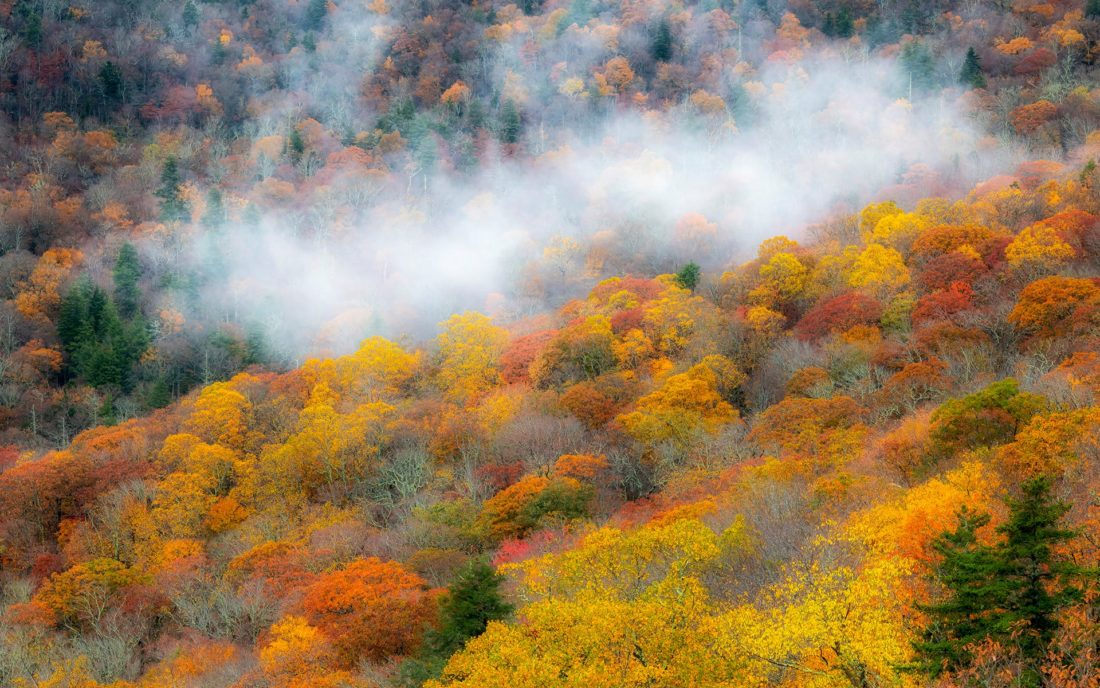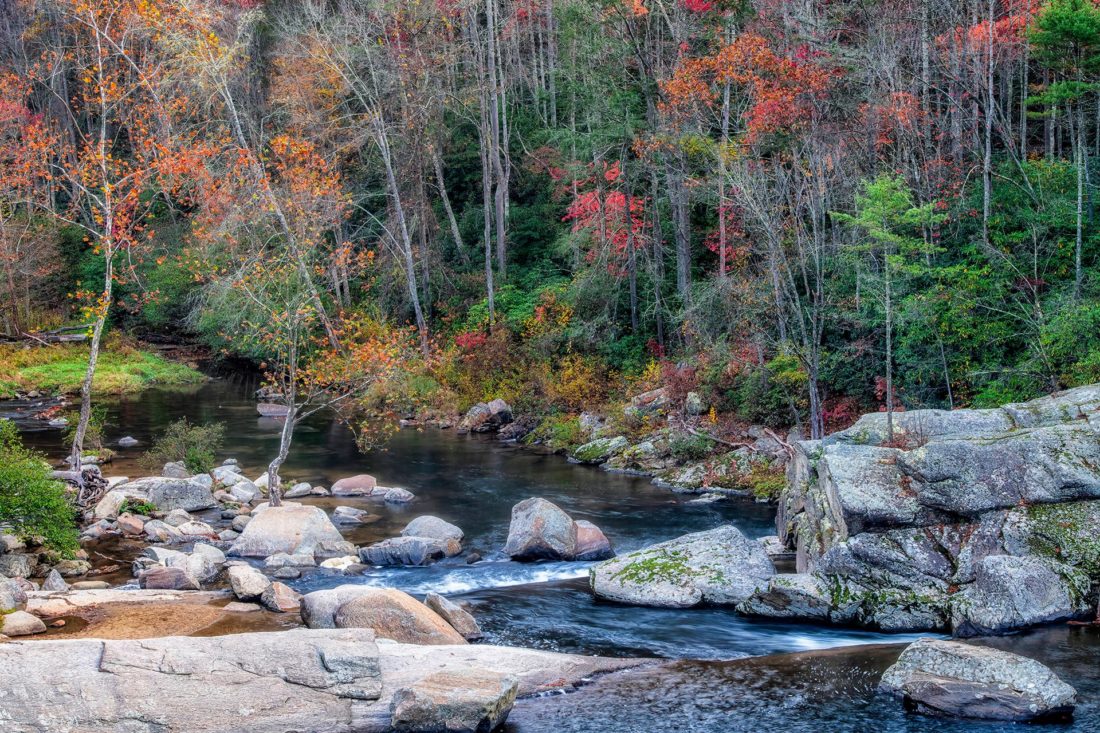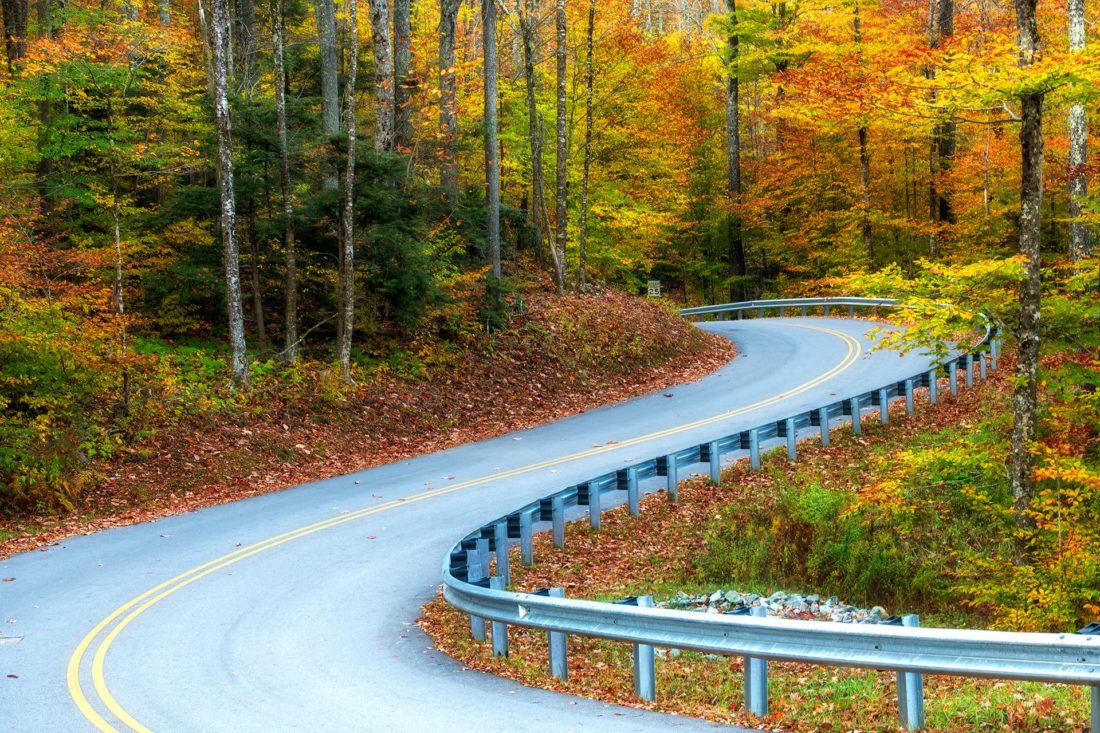Every week from mid-September to early November, Howard Neufeld, who is occasionally accompanied by his English Coonhound, Mila, drives south from his home just outside of Boone, North Carolina, toward Asheville. As the elevation rises and he cruises along the Blue Ridge Parkway, Neufeld takes note of the trees and their changing leaves. Every so often, he’ll pull over at an overlook or a trail to walk around and take photos of the cascading red, orange, and gold hues of fall foliage. Neufeld, an ecologist and professor of biology at Appalachian State University and the “Fall Color Guy” on Facebook, has closely monitored fall leaves in the Southern Appalachian Mountains for nearly fourteen years.
During his leaf peeping excursions, Neufeld keeps an eye out for sassafras, maple, black gum, sourwood, and sweet gum trees, which all produce leaves that turn to iconic fall colors. “Red maples are the quintessential fall color tree,” he says. Neufeld begins his season of weekly roadtrips, traveling to elevations 4,000 feet and higher—where the leaves change color and reach their peak first—in late September and early October. In North Carolina, he recommends visiting Elk Knob State Park, Graveyard Fields, Craggy Gardens, Grandfather Mountain, and Mount Mitchell.

When the colors are on time, the leaves at elevations around 3,000 to 4,000 feet hit their peak in mid-October, like at Linville Falls and lower spots around Waterrock Knob. In late October and early November, leaves at elevations at 2,500 feet or below, like those in Stone Mountain and Chimney Rock State Parks, finally turn their most vivid colors. “What I always tell people,” Neufeld says, “is that the Southeast, the southern Appalachians, has the longest fall color season in the country, because it could start at the end of September and go all the way to Thanksgiving if you just keep following it downhill.”
Sunny and cool days help bring out colors and keep the trees on their regular schedules. “The trees and the flowers all grew really well this year,” Neufeld says. “If we continue to have cool mornings and sunny weather, we should be on time.” Unusually high temperatures will delay peak color, drought could result in trees losing their leaves before the colors change, and a wind or rain storm near peak times could cause trees to lose their leaves sooner. Peak colors will generally last from a week to ten days. If you miss the peak at a certain elevation, head to an overlook and look down—the colors will likely be below you.

Allan Hunt, a retired firefighter paramedic who lives in Moyock, North Carolina, has traveled every fall for the past twenty years in search of peak fall colors. “I’m not an expert, but I do chase them around,” he says. Hunt taught himself photography as a stress reliever during his twenty-five-year-long career. “At the fire department, you see death and destruction all day long and all night long,” he says. “Doing photography and seeing beautiful colors and the way that Mother Nature takes care of things kind of offsets the horrible things that you see.”
Hunt and his wife, Beverly, plan trips around when leaves change color, following the peak from New England to the Smoky Mountains. The couple uses color trackers, including this foliage prediction map, to chart their course. “The kaleidoscope of color, being out in the fresh air—it’s just nice to commune with Mother Nature,” Hunt says. “And in the fall, she really puts on a beautiful show.”








